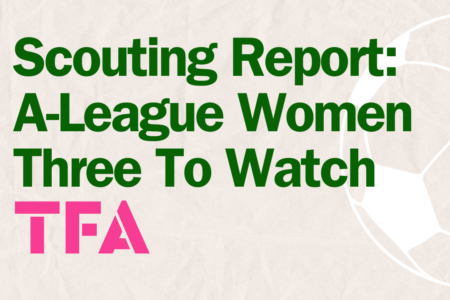“Like a machine”: Why “dominant” Chelsea were a class above lacklustre Arsenal in Women’s FA Cup final – tactical analysis
The 2021 Women’s FA Cup final, delayed from last season as part of the backlog of fixtures caused by the ongoing pandemic, was not one to be missed, with this season’s two best sides facing off against each other at Wembley Stadium in a highly-anticipated meeting. Arsenal Women were looking to win a first trophy under Jonas Eidevall, who had left Swedish giants Rosengard to replace Joe Montemurro (who later opted to take charge of Juventus Femmenile) in the summer, whilst Chelsea Women were seeking a domestic treble, having already secured last season’s WSL and Continental Cup titles, and a quadruple if the Community Shield win over Manchester City Women is added to that list.
This tactical analysis will pick apart the performances of both teams, looking at Arsenal’s tactics and mistakes, as well as how they needed to change as the game progressed, and also Chelsea’s pressing and general team structure, both of which proved essential in their dominant performance and eventual win.
Lineups

Arsenal Women named the same XI that started their last fixture, a 2-0 away league win at Manchester United Women. England defender Leah Williamson remains out with a hamstring injury, and is not expected back until 2022, so Lotte Wubben-Moy and Scotland’s Jennifer Beattie partnered each other once again in central defence, whilst Australia full-back Steph Catley was once again at left-back, allowing Katie McCabe, who had impressed over the last couple of weeks for the Republic of Ireland, to be deployed in the forward line, alongside in-form attackers Beth Mead and Vivianne Miedema. Having these three players at the front showed that Arsenal’s game plan was to expose Chelsea’s back three at every opportunity, just as they did when the two sides met on the opening day of this season.

Chelsea Women, meanwhile, made one alteration to the team that comfortably defeated struggling Birmingham City Women in the WSL on the same day, with Drew Spence dropping to the bench and being replaced by Wales captain Sophie Ingle, who added protection for the back three from the midfield, as Emma Hayes looked to make it harder for Arsenal to find ways through their defensive line. Denmark star Pernille Harder was still making her way back from her own injury, and so started on the bench in this game, meaning that Canada star Jessie Fleming kept her place as one of the forwards, alongside star duo Sam Kerr and Fran Kirby. Scotland’s Erin Cuthbert and Norway’s Guro Reiten were given the wing-back roles, and, with both being attack-minded players, it was clear that Chelsea wanted to play this game on the front foot.
Chelsea Women’s pressing
Chelsea Women were undoubtedly the better team throughout this game, and the reason for this was their clever tactical approach to it. The first notable feature of their game was the way they pressed Arsenal Women’s players around the pitch, maintaining the pressure on them and forcing mistakes to be made.

When in Arsenal’s third, they hunted in groups, with one player closing down whichever opponent had possession, and another then coming forward to claim the ball once it had gone loose. In this case, it is Switzerland midfielder Lia Walti who has been forced to give up the ball, with Sophie Ingle moving in to win it and set up a goalscoring opportunity, as the blue arrow shows. Chelsea’s wing-back formation helped them to play this way, as it meant that they always had numbers around the ball, making it easier to turn these chances into shots at goal. Their first goal, scored by Fran Kirby in the third minute, came after Arsenal’s Norway midfielder Frida Maanum had given the ball away in front of her goal, and it is no exaggeration to say that Chelsea could have been up by four or five before the break, given the number of opportunities they had and the quantity of mistakes made by Arsenal.

It was the same story when Arsenal were in attack, as Chelsea constantly used their numbers to isolate individual players. On this occasion, Vivianne Miedema is trying to get beyond the Chelsea defence, but the former Bayern Munich Frauen striker has had her path blocked by Chelsea, forcing her to stop and allowing Millie Bright and Erin Cuthbert to close her down. The excellent teamwork from Chelsea is the key thing to note here, as each player knew their roles and when to go, which comes down to the hard work done on the training ground before the game.
From Arsenal’s point of view, they did pose a threat in these situations, especially if it was Miedema or Beth Mead leading the attack. However, what let them down was a lack of support, with other players not getting up the field quick enough to offer passing options and keep the attacks alive, which gave Chelsea time to surround whichever player had possession. Therefore, whilst it was good anticipation from Chelsea to win the ball in these situations, they were again helped by Arsenal’s poor play.

Last season, Arsenal tended to leave their wide forwards further out and task them with crossing balls into the box for the likes of Miedema to score from. However, Jonas Eidevall has changed this slightly, with the two wide attackers now allowed to cut inside and overload the central areas of the pitch, increasing the team’s productivity in the final third, which has led to their good form this season. To make this work even more, Katie McCabe has often played as a forward and not in her usual left-back role, with her pace being used purely for attacking and not to get back and defend too.
However, Chelsea were aware of this, which is why Erin Cuthbert started this game at right wing-back. The Scotland international loves to get tight to opposing players, and she was key in limiting the influence that McCabe initially had in the first half, forcing her here to go backwards and not into one of the other forwards. Arsenal’s attack was kept relatively quiet throughout the first half as a result, and this is another example of how Chelsea’s pressing helped them to subdue their opponents and control the game.
Chelsea Women’s team structure
As well as pressing Arsenal Women, Chelsea Women’s team structure was also a key factor in their victory, with each part of the team set up to make the most of every opportunity they had.

Emma Hayes started with a front three in attack, but this rapidly developed into a triangular structure, as this image shows, with Jessie Fleming and Fran Kirby tending to drop back and play behind Sam Kerr. This did mean that Chelsea only had one striker at the top of the field for most of the game, which sounds like a problem. However, it meant that they now had two players providing a link between the midfield and forward areas of the pitch, giving them different ways of building attacks. One option was to play through the thirds and give themselves a better chance of keeping possession, but, if Arsenal had marked the two attacking midfielders to prevent this happening, then they could also play long balls straight to Kerr.
We mentioned how Cuthbert was included in the team to counter the threat posed by McCabe, but another was to use her good range of passing to start attacks as quickly as possible, and she made plenty of aerial passes from the back whenever she had the ball. Chelsea’s second and third goals were scored through Kerr receiving the ball in open space between or behind the Arsenal defenders, so this was another tactic that clearly worked for Emma Hayes’ side.

In defence, the wing-backs worked well with each other to ensure that they didn’t both go forward, meaning that there was always protection for the back three. This was one of the mistakes they made against Arsenal in the league, so showed how they had taken those lessons and improved the defensive aspect of their 3-4-3 formation, which had previously been their downfall. Generally, it was Cuthbert who stayed back, with her presence giving Chelsea a compact defensive line, whilst the two midfielders, Ingle and Germany international Melanie Leupolz, were free to move around in front of them and harass the Arsenal players.
We mentioned how Katie McCabe didn’t have much of an influence on the game in the early stages of the first half, and Cuthbert’s body position here meant that, should Miedema pass to her here, the Chelsea wing-back would be able to get out and either intercept the ball or tackle the Republic of Ireland international. Therefore, even when Arsenal did have the ball and look like breaking Chelsea down, they still weren’t able to find a way through, and the presence of the wing-backs, especially Cuthbert, was key to that.

Whilst Cuthbert was helping out at the back, Guro Reiten, who has been Chelsea’s first choice in the left wing-back role this season, tended to get up the pitch and support her team’s attacking play, constantly finding spaces behind the Arsenal defence and making passes for her teammates to get on the end of. Here, Chelsea captain Magdalena Eriksson is pointing to where she wants Reiten to pass to, and the wing-back’s presence meant that Chelsea could bring more players infield and access these areas more regularly as the game went on. With Jonas Eidevall’s side rapidly losing confidence as the game went on, controlling the wings in this way was essential in helping Chelsea to keep the pressure on them and eventually win the game.
Arsenal Women’s tactics
Chelsea Women may have shown some good tactical ideas throughout this cup final, but Arsenal Women gave them a huge helping hand, as they made too many mistakes and allowed their opponents to control the match.

Their main problem was at the back, where they lacked intensity and didn’t make any attempts to win balls back, which was the complete opposite of Chelsea’s defensive play. Here, Fran Kirby is dribbling towards the goal area, but has been faced by five Arsenal players. If this was Chelsea, then Kirby would be quickly closed down and end up losing the ball, but Arsenal instead kept backtracking and allowing her to get closer to the goal, which is dangerous, given the potency she possesses. Once she got close enough here, she moved the ball out of her feet and shot at goal, hitting the post and letting Arsenal off, but this could have been avoided if the defenders had moved to close her down before she had taken the shot.
This was not the first time that they had allowed Chelsea to have space at the back either, and both Lotte Wubben-Moy and Jennifer Beattie had games to forget, making plenty of mistakes between them and never looking confident, which seemed to spread throughout the rest of the team. We have already seen how Chelsea pounced on plenty of errors and could have scored more than once in the first half, and Austria goalkeeper Manuela Zinsberger’s heroics when needed was the only thing that kept Arsenal in the game.

However, we do need to give Jonas Eidevall’s side some credit, because they did react to what was happening and change the team around to try and find a way into the game. The main difference in the first half was that McCabe and Mead swapped sides, which seemed to give Arsenal more balance and threat in the final third. Cuthbert found it harder to compete with Mead on the left-hand side, whilst McCabe looked more comfortable on the right of the pitch, cutting inside on her favoured left foot and delivering several good crosses into the box. Arsenal as a result were able to ask more questions of the Chelsea defenders (which they generally answered), and the last 15 minutes of the first half were their best moments, as they looked more like the Arsenal we have come to know.

There was also a notable alteration in the midfield at the start of the second half, as the flat three that had not been able to influence the game was given layers, with captain Kim Little given licence to get forward and support attacks, whilst Lia Walti and Frida Maanum stayed back and gave the defence some much-needed protection. This meant that Arsenal could find a few more pockets of space, with this image showing Little running through a gap in Chelsea’s defensive line to try and create a chance for her team.
The former Scotland international is the type of player who needs to be given free reign on the pitch, and she has played her best football this season when allowed to run behind opposing defences and pick up passes, or to find gaps and expose them with well-weighted balls into teammates. Her change in role gave Arsenal the spark that they had needed, as they began to play with more energy and urgency in the second half. The problem was that this turnaround came too late for them to completely turn the game around, and any chance they did have of getting back into the match went away when Sam Kerr scored Chelsea’s second from a perfect counter-attack, draining Arsenal’s newfound confidence away.
Conclusion
In conclusion, this tactical analysis has indicated how Chelsea Women were the dominant team in this game, with Emma Hayes stating afterwards that her team had been like a machine. Given what we have seen in this analysis, it is hard to disagree with her, as they were organised and well-drilled at the back, whilst they had a potent and speedy approach when attacking. Arsenal Women, meanwhile, will be no doubt stunned by the way the game went away from them so quickly, but will know that it was their own errors that led to Chelsea’s dominant, well-deserved victory. The result and clean sheet will feel like some form of payback for Emma Hayes and Chelsea, avenging their 3-2 defeat to Arsenal on the opening day of the season and proving that, despite currently sitting behind their opponents by a point in the WSL, Chelsea are still the team to beat in English women’s football.



